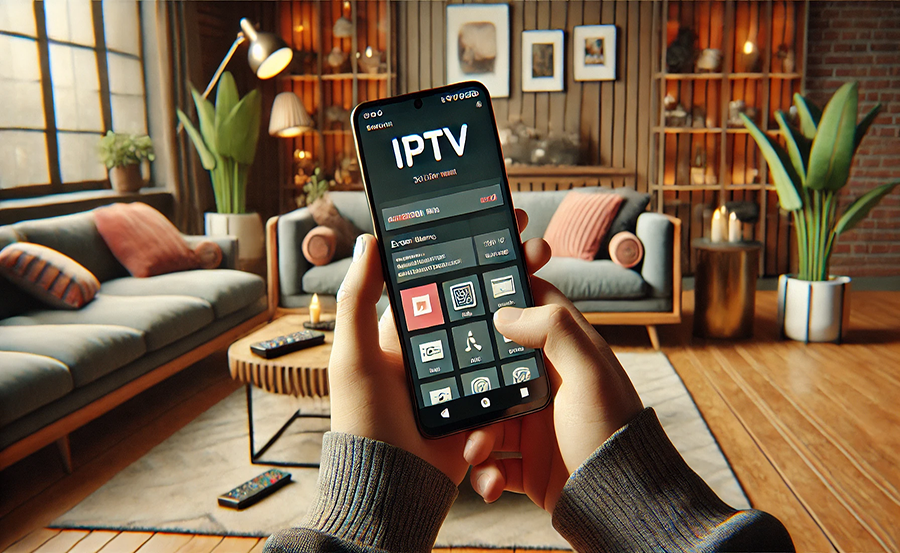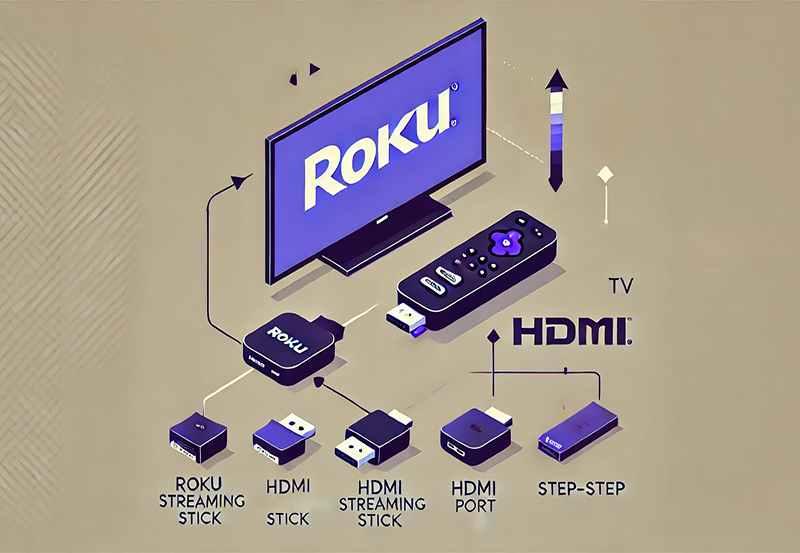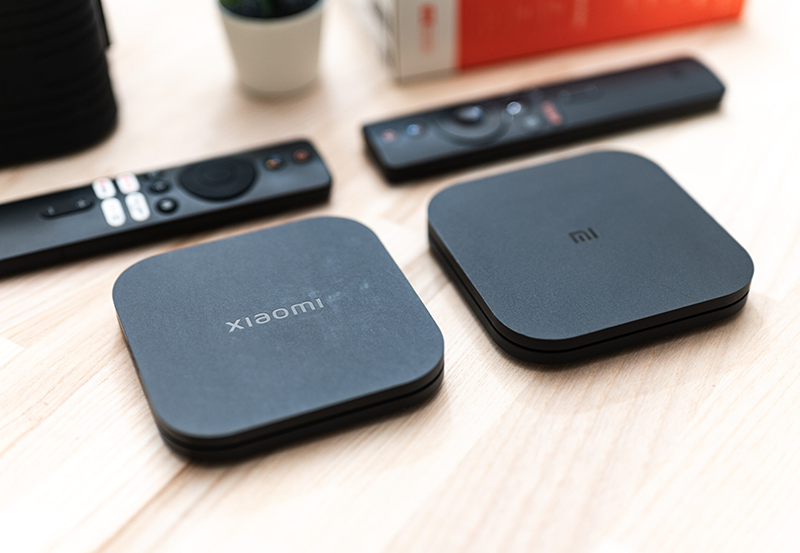The World of IPTV: An Introduction
In today’s digital age, IPTV has swiftly become a mainstream method for streamlining content delivery to a global audience. While traditional broadcasting systems are still in place, IPTV offers a flexible alternative that caters to personalized viewing experiences. But as users increasingly access IPTV on mobile devices, codec issues become an often-overlooked challenge. The intricacy of these problems can lead to frustration, making it essential for both service providers and customers to comprehend and tackle these issues effectively. Buy 1 Year IPTV Subscription and Enjoy Unlimited Content
Mobile devices, with their varied operating systems and hardware configurations, present unique challenges in handling codecs. The term “codec” is short for decoder/encoder, a software or hardware that compresses and decompresses digital content. This function is critical for ensuring smooth streaming. When codec compatibility isn’t factored into IPTV delivery, buffering and degraded video quality become inevitable obstacles. This article seeks to demystify these codec issues as they relate to IPTV, specifically on mobile devices.
The Rise of IPTV in Mobile Streaming
As more viewers transition from traditional television to IPTV services, the demand for seamless streaming experiences has soared. The ability to stream on mobile devices adds a layer of convenience that was previously unimaginable. However, navigating codec challenges is crucial for maintaining viewer satisfaction. Service providers like DuplexIPTV have made strides in accommodating codec diversity, but not without hurdles.
Understanding the variety in mobile hardware—from Apple’s iOS-based devices to those running Android—can help elucidate why codecs often fail. Furthermore, factors such as differing network environments during IPTV trials can introduce variables that complicate codec consistency. The complexities involved in codec selection when streaming can significantly impact user experiences, and require keen attention to detail.
Why Codecs Matter in Streaming
In the simplest terms, codecs prepare digital data for transmission, enabling IPTV services to deliver content that is appropriately scaled to mobile device capabilities. If a codec does not align with a device’s specifications, playback issues arise. Moreover, codecs influence not only video but also audio quality, affecting overall user satisfaction. Knowledge of the most prevalent codecs and their respective compatibilities can reduce incidences of streaming errors.
Service providers must consistently evaluate and update their codecs as new devices hit the market. The fluidity of technological advancements means that remaining static in one’s approach to codecs could lead to obsolescence. As such, both native and third-party solutions play a pivotal role in achieving optimal IPTV service delivery.
Common Codec Issues on Mobile Devices
Incompatibility and How It Affects Streaming
Codec incompatibility is a primary issue affecting mobile IPTV streaming. When a codec doesn’t align with a device’s capabilities, it can lead to buffering, degraded quality, or a complete inability to access content. Different devices support different sets of codecs, which means a one-size-fits-all solution is often unattainable.
- Compatibility with device operating systems
- Network bandwidth considerations
- Constraints of device processing power
Detailed understanding and troubleshooting of these factors can enhance the viewing experience for end-users. By identifying and overcoming these barriers, mobile IPTV providers can ensure a smoother, more fulfilling service.
Impact on User Experience
The user experience is inevitably compromised when codec issues interfere with streaming. Buffering is one of the most frequent complaints, causing interruptions that are frustrating and sometimes, unfortunately, expected with IPTV. Beyond buffering, codec issues can result in diminished video quality and audio synchronization problems.
Such disruptions not only frustrate users but can also have a cascading effect on the reputation and profitability of IPTV service providers. Emphasizing codec solutions will empower companies to offer “Ultimate Streaming Insights,” positioning themselves as leaders in the IPTV market.
Mobile Network Constraints
Network constraints can exacerbate codec-related issues. Mobile data networks often have bandwidth limitations leading to compressed but inefficient streaming. Moreover, on-the-go users frequently transition between networks, each with varying bandwidth capabilities, necessitating adaptive codec handling.
Service providers should consider implementing adaptive bitrate streaming (ABR) to cater to variable network strengths. By adjusting the quality of video streams in real-time, ABR can help mitigate codec compatibility issues, providing a smoother transition across fluctuating network environments.
Solutions and Best Practices
Embracing Codec Diversity
To combat incompatibility issues, embracing a diverse suite of codecs is paramount. Integrating popular codecs like H.264, AAC, and emerging options such as AV1 can enhance content delivery across different mobile devices. While this doesn’t erase compatibility issues entirely, it minimizes their occurrence, facilitating a more universal streaming capability.
Companies like DuplexIPTV are leading the charge by supporting a wide range of codecs, ensuring broader accessibility. While the initial investment in codec diversity may seem steep, the long-term benefits of improved user retention and satisfaction justify these efforts.
Regular System Updates
Regular updates are a critical strategy in managing codec issues effectively. Technology is evolving at a staggering pace, and system updates ensure that your IPTV service remains compatible with new devices and operating systems.
Frequent updates, especially post-IPTV trials, enable you to refine your codecs and address any unforeseen glitches swiftly. Proactive updates also serve as a safeguard against security vulnerabilities, maintaining the integrity and trustworthiness of your streaming platform.
Optimize Content for Mobile Devices
Optimizing content specifically for mobile devices is another effective strategy. Customizing resolution and bitrate to suit mobile streaming capabilities not only reduces the likelihood of codec issues but also enhances overall performance and user satisfaction.
By focusing on adaptive streaming technology, IPTV services can dynamically adjust to users’ bandwidth conditions, thus optimizing content delivery. In doing so, services can drastically elevate the quality of their mobile streaming experience.
Building an IPTV Service That Lasts
User Feedback Loops
Listening to user feedback can provide valuable insights into persistent codec-related challenges. Implementing effective feedback loops allows IPTV providers to respond promptly to user-reported issues. This iterative process not only helps fine-tune existing services but also cultivates a user-centric company ethos.
Conducting user surveys can be instrumental in gauging satisfaction levels. By analyzing response metrics, you can implement targeted strategies that address user-experience gaps, fostering a loyal customer base.
Evolving with Technological Advances
Staying abreast of technological advancements is imperative for IPTV services aspiring to maintain relevance in a competitive market. With emerging technologies like 5G and next-gen codecs on the horizon, adapting to these innovations can provide intrinsic benefits.
Through partnerships with tech leaders or in-house R&D, IPTV providers can access cutting-edge technology, offering users enhanced experiences through superior video and audio qualities. Aligning with trends helps in establishing a forward-thinking brand identity.
Training and Capacity Building
Investing in staff training ensures team members are equipped to manage and resolve codec issues efficiently. Providing comprehensive training sessions that focus on identifying and tackling common challenges encourages a knowledgeable workforce capable of innovation.
Capacity building within your organization fosters a culture of expertise, allowing your team to navigate and address changes in the technical landscape successfully. It’s a worthwhile investment that offers enduring returns.
Future Directions and Innovations
Harnessing AI for Codec Solutions
Artificial Intelligence (AI) is increasingly becoming a viable solution for managing complex codec problems. By integrating AI-driven analysis, IPTV providers can achieve real-time adjustments and predictive optimizations, paving the way for more robust and effective streaming services that adapt to individual device specifications and network conditions.
Although AI implementation requires technical finesse, the potential to streamline operational processes and enhance user experiences makes it an appealing prospect for forward-thinking IPTV companies looking to distinguish themselves from competitors.
The Role of Blockchain in Streaming Security
While not directly related to codec issues, incorporating blockchain technology could solidify IPTV security protocols, preventing data breaches and unauthorized access. This enhancement indirectly supports codec management by preserving the integrity of streaming platforms.
Blockchain’s decentralized nature can act as a valuable supplement to traditional cybersecurity measures, fostering trust among user bases concerned about their digital privacy. A comprehensive approach to security is essential in today’s market.
Looking Beyond the Horizon
Innovations in codec technology continue to progress, promising potential improvements in efficiency and compatibility. As codecs become more sophisticated, they will offer better compression and decompression capabilities, thus augmenting the quality of IPTV streaming across devices.
It’ll be exciting to see how these advancements shape future developments in IPTV streaming on mobile devices. Embracing change and innovation is the key to sustained success in an ever-evolving digital world.
Frequently Asked Questions
What is a Codec and Why is it Important for IPTV?
A codec is a tool that encodes and decodes digital content, crucial for IPTV as it ensures that multimedia is transmitted efficiently. Without proper codec support, streaming quality can suffer, leading to issues like buffering or loss of synchronization.
Which Codecs are Most Compatible with Mobile Devices for IPTV?
Popular codecs such as H.264 for video and AAC for audio are widely used due to their broad device compatibility. Emerging options like AV1 also offer promising alternatives for efficient streaming on mobile platforms.
How Can Service Providers Mitigate Codec Issues in IPTV Delivery?
Providers can mitigate codec issues by integrating codec diversity, conducting regular updates, and using adaptive streaming technologies. Listening to user feedback and embracing technological advancements also play a critical role in optimizing service delivery.
What Role Does AI Play in Addressing Codec Problems?
AI can significantly enhance the management of codec issues by enabling real-time optimizations and predictive analysis, ensuring that content is delivered smoothly across different mobile devices and network environments.
Why are Regular System Updates Essential for IPTV Services?
Regular updates ensure that IPTV services remain compatible with the latest device and operating system technologies. They also fortify the platform against security vulnerabilities, helping maintain service integrity and user trust.
Is Blockchain Relevant to Codec Issues in IPTV?
While blockchain doesn’t directly resolve codec issues, it strengthens security protocols, ensuring safe streaming experiences. This added layer of security can indirectly support the efficient functioning of codecs by safeguarding the platform’s overall integrity.
Perfect Player vs. Other IPTV Apps: Which is Best for Android?





